Crew 186 Operations Report 02JAN2018
SOL: 02
Name of person filing report: M. Grande
Non-nominal systems: Generator power system
Notes on non-nominal systems:
Ready for a long Engineering story? Following the generator failure early yesterday morning, I’ve been keeping an eye on the batteries and the battery charger. Yesterday, Sol 01, I removed the plastic covers from the posts to break out the “new” battery (with the sticker “9/17”), plugging that into the charger. As noted in Sol 01 Operations Report, I switched out the batteries in the evening, so the “old” battery (sticker “10/17”) that we had been using all the time was back in action. Though the batteries should supposedly last us 24 hours, the new 9/17 battery was unfortunately at a 50% SOC yesterday evening, after running the generator through our Martian daylight hours. This may be due to my lack of knowledge in the need to charge batteries before usage, and I would please request clarification on this requirement and possible effects of not charging before first use.
I mention this concern because today, Sol 02, has been a bright, sunny, and clear day… Perfect for spending the day taking trips through the tunnels to keep checking on an off-nominal battery charger! This morning, the battery charger showed 0% SOC after it was supposed to be charging the new 9/17 battery all night long! Too cold in the Science Dome maybe, even though I moved it inside? Also this morning, the generator indicated low battery and was running at only 9.3 V (lower than nominal 12 V). The rugged old 10/17 battery had charged all day, supposedly, but now apparently was at low charge after only running through the night.
Well, Max and I hooked up the multimeter he brought to check the voltages and amp draw on both batteries. At some point, the charger also began showing around 50% SOC on both the batteries. The charger was connected to the old 10/17 battery for several hours in the morning, and then was connected to the new 9/17 battery for several hours–in fact, all afternoon. Wrong SOC readings on the charger? The 50% generator battery SOC seems to be a small success, because the multimeter readings indicate the batteries should be full… On both batteries, now: 13.0 +/- 1.0 V and 5.5 +/- 0.6 A. Based on some battery knowledge and reading over a couple Schumacher Battery Chargers 10/2 A output, this indicated a fully charged battery. Small success?
The trusty old 9/17 battery has been plugged in this evening around 5pm when the Hab switched from solar power. The 10/17 battery was plugged into the generator at first, showing 100% SOC on the charger actually, but the generator failed to start. So I brought it back in and am leaving it plugged into the charger inside the Science Dome overnight.
We’ll continue to keep an eye on the generator system! The battery charger remains suspicious and on trial.
Generator (hours run): 12.8h
Generator turned off, charging 10/17 battery at 8:45am
Charging 9/17 battery at 12:30pm
Generator turned on at 5:50pm
Solar— SOC
@ 8:00am : 100%
@ 5:50pm : 60%
Diesel: 65%
Propane: 39%
Ethanol Free Gasoline (5 Gallon containers for ATV): 00 Gallons
Water (trailer): 10 Gallons
Water (static): 430 Gallons
Trailer to Static Pump used: No
Water (loft) – Static to Loft Pump used: Yes
Water Meter: 128950.1 Gallons
Toilet tank emptied: No
ATVs Used: None
Oil Added? No
ATV Fuel Used: 00 Gallons
# Hours the ATVs were used today: 00:00 hours
Notes on ATVs: None
Deimos rover used: No
Hours: 96.4
Beginning charge: 100%
Ending charge:
Currently charging: Yes
Sojourner rover used: Assigned to director only.
Hours: 5.1
Beginning charge: Unknown
Ending charge: 96%
Currently charging: No
Spirit rover used: Yes
Hours: 7.6
Beginning charge: 100%
Ending charge: 89%
Currently charging: Yes
Opportunity rover used: No
Hours: 4.3
Beginning charge:
Ending charge:
Currently charging: No
Curiosity rover used: Yes
Hours: 3.1
Beginning charge: 100%
Ending charge: 72%
Currently charging: No
HabCar used and why, where? No
General notes and comments:
Curiosity rover was charging from the end of the EVA until the Engineering EVA, when I switched the cord to Spirit. However, I forgot to check the final charge on Curiosity after the Engr EVA, my apologies. We need 1-2 more extension cords in order to have all rovers charging at one time.
I took my first real Engineering EVA this evening with Commander Max! We trekked over to check the propane, unloaded some things for the little NorCal rover from the RAM, and I checked on a couple of our electric rovers. Tried out the Exo-Suit for the first time, too! Felt great at first and definitely so easy to slip on, and I appreciated it not hitting the back of my head like the other EVA packs–poor short Mel. Halfway through (which ws only after about 10 mins) I did feel some pretty uncomfortable strain on my shoulders. I’ll try adjusting it better next time.
Summary of internet: All nominal
Summary of suits and radios: All nominal
Summary of Hab operations: All nominal
Summary of GreenHab operations: All nominal
Summary of ScienceDome operations: All nominal
Summary of RAM operations: Not Operational
Summary of health and safety issues: Crew is Healthy
Questions, concerns and requests to Mission Support:
Maybe we can find someone with more generator and battery knowledge to check out what’s been going on. I’ve tried to record everything in my notebook and summarize them for CapCom so far. Also, I replaced the air filter, and Shannon says this should become routine at the start of each rotation from now on.
Regards,
Melanie Grande, Crew 186 Engineer


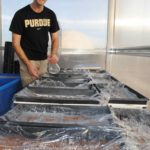

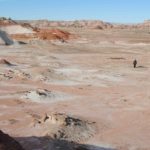
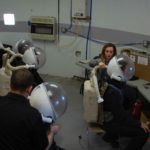
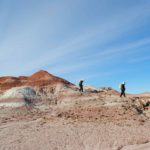
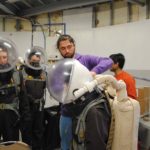
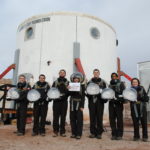
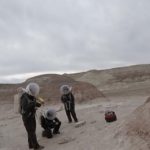
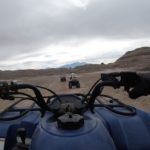
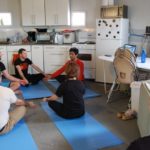
You must be logged in to post a comment.